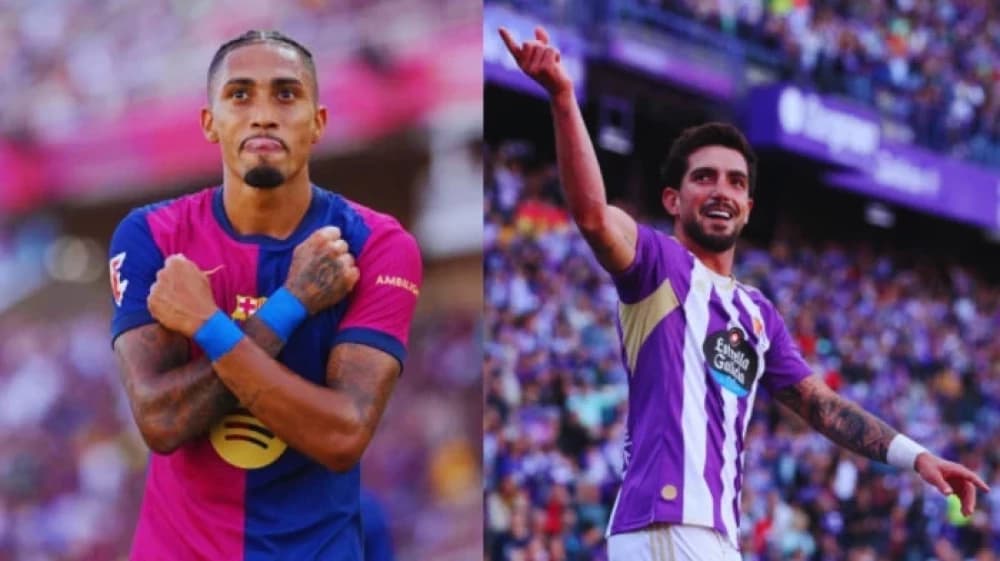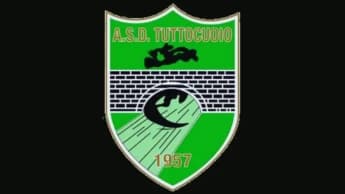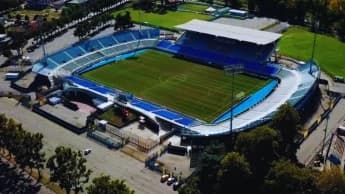
From Historic Triumphs to a Bold Future in Spanish Football
Real Valladolid Club de Fútbol, S.A.D., commonly known as Real Valladolid, has long been a respected institution in Spanish football. Established on June 20, 1928, the club represents Valladolid, the heart of Castile and León, a region steeped in history and cultural heritage. Its iconic violet and white striped kits are a symbol of tradition, worn with pride by generations of players and supporters alike.
The club’s home, Estadio José Zorrilla, has been the battleground for nearly a century of footballing battles, accommodating 27,846 passionate fans. Through triumphs, challenges, and unwavering determination, Real Valladolid has carved out a distinctive identity in Spanish football, showcasing resilience and an indomitable fighting spirit.
A Storied Legacy: Achievements and Honors
Real Valladolid’s history is defined by notable achievements and an unrelenting pursuit of excellence. Among its most significant milestones are:
- Copa de la Liga (1983–84) – The club’s only official major trophy, earned with an emphatic victory over Atlético Madrid.
- Copa del Rey Finalists (1949–50, 1988–89) – Twice finishing as runners-up in Spain’s premier domestic cup competition.
- European Campaigns – Participation in the UEFA Cup (1984–85, 1997–98) and the UEFA Cup Winners' Cup (1989–90), marking Real Valladolid as a competitor on the continental stage.
- La Liga Pichichi Trophy Winners – Recognition of Manuel Badenes and Jorge da Silva as the league’s top scorers.
- Homegrown Spanish Internationals – Producing ten players who have represented Spain on the international stage.
Navigating the Highs and Lows of Spanish Football
Since debuting in La Liga in 1948–49, Real Valladolid has firmly established itself as the most successful club from Castile and León, spending:
- 47 seasons in La Liga (First Division)
- 36 seasons in Segunda División (Second Division)
- 10 seasons in the Third Division
However, the club has frequently found itself in a "yo-yo club" scenario in recent years, experiencing multiple promotions and relegations between the top two tiers. Despite these setbacks, Valladolid’s ability to rebuild and return to La Liga exemplifies its enduring resilience.
A New Era Under Ronaldo Nazário
A defining chapter in Real Valladolid’s modern history began on September 3, 2018, when Brazilian football legend Ronaldo Nazário acquired a 51% controlling stake in the club. His vision for modernization and competitiveness has since reshaped Valladolid’s trajectory. By June 2024, Ronaldo increased his ownership to 82%, solidifying his long-term commitment to the club.
Under Ronaldo’s leadership, the club has focused on:
- Strengthening its squad through strategic recruitment.
- Developing young talent via its subsidiary, Real Valladolid Promesas, competing in the Segunda Federación.
- Modernizing infrastructure and enhancing club operations.
Though challenges persist, Ronaldo’s influence has reignited ambitions for sustained La Liga stability and potential European qualification in the coming years.
Historic Evolution: Real Valladolid’s Journey Through the Decades
Formation and Early Success (1928–2001)
Real Valladolid was born from the merger of Real Unión Deportiva de Valladolid and Club Deportivo Español in 1928. The club’s first official match, a 2-1 victory against Alavés on September 22, 1928, marked the beginning of an enduring football legacy.
Key milestones include:
- 1947–48: Earned its first promotion to La Liga, becoming Castile and León’s first club in the top tier.
- 1949–50 Copa del Rey Final: Despite a 4-1 loss to Athletic Bilbao, Valladolid cemented itself as a rising force.
- 1980: After bouncing between divisions, Valladolid secured a lasting La Liga presence.
- 1984 Copa de la Liga Victory: Defeated Atlético Madrid, earning their first and only major domestic title.
- 1996: Played their 1,000th La Liga match, highlighting their longevity.
Carlos Suárez Era (2001–2018): Rebuilding and Modernization
The early 2000s brought financial challenges but also moments of brilliance:
- 2006–07: Under José Luis Mendilibar, Valladolid secured promotion with a record 88 points and a 29-match unbeaten streak—the longest in Spanish football history.
- 2011–12: Earned La Liga promotion via playoffs under Miroslav Đukić.
- 2017–18: Returned to La Liga after a stunning 4-1 aggregate playoff win over Numancia.
Despite the club’s financial constraints, this era solidified Valladolid’s reputation for producing young talent and maintaining a competitive edge in Spanish football.
Club Infrastructure and Development
Estadio José Zorrilla: A Fortress for Valladolid
Since its inauguration in 1982, Estadio José Zorrilla has been Valladolid’s footballing temple. With a capacity of 27,846, it remains one of Castile and León’s premier sporting venues. Continuous renovations have modernized facilities, ensuring a world-class environment for players and fans.
Campos Anexos & Youth Academy: The Future of Real Valladolid
The club’s Campos Anexos training facility, located next to the stadium, plays a pivotal role in player development. This state-of-the-art complex includes:
- Top-tier training pitches
- High-performance gym and recovery areas
- Medical and physiotherapy departments
The Real Valladolid Academy is a renowned talent factory, nurturing young prospects through structured technical and tactical programs. Many academy graduates have gone on to represent the first team and Spain’s national squads.
Real Valladolid Promesas: Bridging Youth and Senior Football
The reserve team, Real Valladolid Promesas, competes in the Segunda Federación, providing an essential stepping stone for academy graduates. It serves as a developmental pipeline, ensuring a seamless transition from youth football to professional competition.
The Road Ahead: Building a Sustainable and Competitive Future
Looking forward, Real Valladolid is focused on long-term stability and consistent La Liga presence. Key objectives include:
Securing top-flight stability – Avoiding relegation battles through strong recruitment and squad depth.
Strengthening youth development – Expanding academy resources and scouting networks.
Modernizing club infrastructure – Continuous investment in training facilities, stadium renovations, and fan engagement.
Expanding global reach – Enhancing commercial partnerships, sponsorships, and digital presence.
Exploring European qualification – Aiming for UEFA competitions through sustained league success.
Despite recent relegations and managerial shifts, Valladolid’s ambition remains stronger than ever. With Ronaldo Nazário at the helm, the club is poised for a new era of growth, resilience, and sporting excellence.
Conclusion: A Club with Heart, History, and Hope
Real Valladolid’s story is one of unwavering passion, resilience, and ambition. From its humble beginnings in 1928 to its pursuit of top-tier stability today, the club has remained a pillar of Castile and León’s footballing identity.
With a rich history, a visionary leader in Ronaldo, and a loyal fan base, the future of Real Valladolid promises renewed success and enduring legacy in Spanish football.





